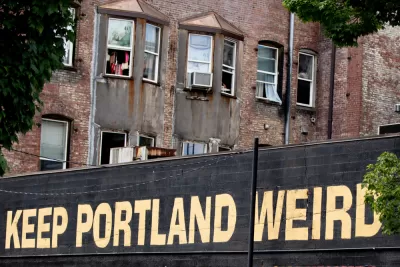A new survey of unprecedented scale offers insight into the diverse range of inclusionary housing programs and the keys to the success of inclusionary zoning programs.

Inclusionary housing programs tie the creation of affordable, below-market-rate units to the construction of new market-rate development. In its simplest form, an inclusionary housing program might require developers to sell or rent 10 to 20 percent of new residential units to lower-income residents at prices they can afford.
If designed properly, inclusionary housing can also be a tool to combat exclusionary zoning and promote racial equity in housing. Scholars like Natalie Moore and Richard Rothstein detail how neighborhood disinvestment and housing disparities are the direct result of federal, state, and local race-based policies. Exclusionary zoning, racially restrictive covenants, and redlining all deprived households of color of equal access to neighborhoods of their choice and of wealth-building through traditional homeownership. The first inclusionary policies were explicitly intended to reduce racial and economic segregation at the neighborhood level.
However, racial equity is not the only reason cities and counties may adopt inclusionary housing policies. Some use it as simply another tool to create more affordable housing. Others use it to promote mixed-income neighborhoods. Some communities see inclusionary housing as a way to reduce the risk of gentrification and displacement linked to market-rate development. And other programs are created primarily to incentivize new development, with the inclusion of affordable units as a side benefit.
There are hundreds of inclusionary housing programs across the nation, and more programs are being adopted every year. Grounded Solutions Network conducted a large-scale data collection effort between 2018 and 2019 to study inclusionary housing programs in local jurisdictions, building upon our previous 2017 working paper. Since 2017, new programs have emerged in places such as Atlanta, Portland, Minneapolis, and Detroit. In response to the growing number of municipal policies, some states have enacted their own laws that either support or impede the adoption of inclusionary housing by cities and counties. Notably, in California, the passage of Assembly Bill 1505 in 2017 (also known as “Palmer Fix” bill) returns power to local jurisdictions to implement inclusionary housing on rental projects.
Policymakers and advocates want to make sure they are focusing their limited resources and energy on effective affordable housing strategies.
Is Inclusionary Housing a Useful Tool in My State?
In a few states, such as ...
FULL STORY: Inclusionary Housing: Secrets to Success

Maui's Vacation Rental Debate Turns Ugly
Verbal attacks, misinformation campaigns and fistfights plague a high-stakes debate to convert thousands of vacation rentals into long-term housing.

Planetizen Federal Action Tracker
A weekly monitor of how Trump’s orders and actions are impacting planners and planning in America.

San Francisco Suspends Traffic Calming Amidst Record Deaths
Citing “a challenging fiscal landscape,” the city will cease the program on the heels of 42 traffic deaths, including 24 pedestrians.

Defunct Pittsburgh Power Plant to Become Residential Tower
A decommissioned steam heat plant will be redeveloped into almost 100 affordable housing units.

Trump Prompts Restructuring of Transportation Research Board in “Unprecedented Overreach”
The TRB has eliminated more than half of its committees including those focused on climate, equity, and cities.

Amtrak Rolls Out New Orleans to Alabama “Mardi Gras” Train
The new service will operate morning and evening departures between Mobile and New Orleans.
Urban Design for Planners 1: Software Tools
This six-course series explores essential urban design concepts using open source software and equips planners with the tools they need to participate fully in the urban design process.
Planning for Universal Design
Learn the tools for implementing Universal Design in planning regulations.
Heyer Gruel & Associates PA
JM Goldson LLC
Custer County Colorado
City of Camden Redevelopment Agency
City of Astoria
Transportation Research & Education Center (TREC) at Portland State University
Jefferson Parish Government
Camden Redevelopment Agency
City of Claremont




























